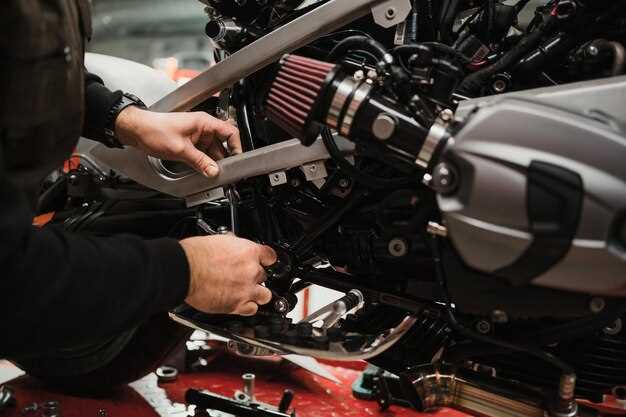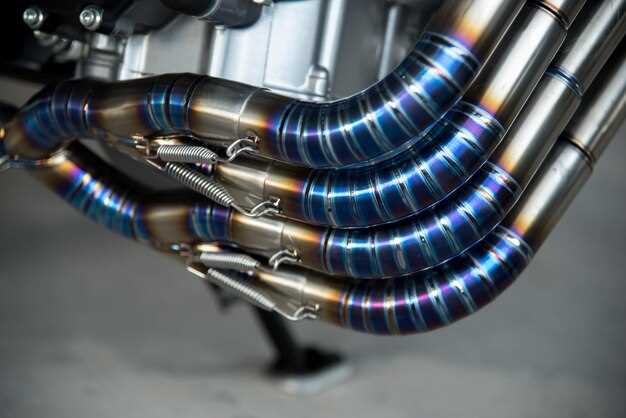
In the competitive world of motorbike racing, every component matters, and the air filter is no exception. A high-performance air filter can significantly enhance engine efficiency, leading to improved acceleration and overall speed. By optimizing airflow, these filters ensure that the engine receives the best possible mixture of air and fuel, which is crucial for maximizing power output.
Air filters designed for competition environments are specifically engineered to provide superior filtration capabilities while minimizing airflow resistance. Unlike standard filters, competition-grade options use advanced materials and designs that allow for greater air intake, enabling racers to unleash their bikes’ full potential. Selection of the right air filter is, therefore, a vital aspect for any serious competitor looking to gain an edge on the track.
The performance of a motorbike can be profoundly affected by the quality of the filter used. High-performance air filters not only enhance power delivery but also contribute to engine longevity by preventing debris and contaminants from entering the combustion chamber. In a sport where every millisecond counts, understanding and implementing the latest advancements in air filtration technology becomes an essential part of a racer’s strategy.
Choosing the Right Material for Maximum Airflow
When selecting an air filter for competition motorbikes, the choice of material is critical for achieving maximum airflow. The efficiency of an air filter directly influences engine performance, making it essential to understand the properties of different materials.
High-performance air filters are typically made from three common materials: foam, cotton, and paper. Foam filters are often preferred for racing applications due to their open-cell structure, which allows for excellent airflow while maintaining a high dirt-holding capacity. They are washable and reusable, providing long-term benefits if properly maintained.
Cotton filters, known for their oiled design, offer a balance between filtration efficiency and airflow. The porous nature of cotton enhances airflow significantly compared to traditional paper filters. Moreover, they can be cleaned and re-oiled, making them an economical choice for racers focused on peak performance.
Paper filters are the standard in many motorcycle applications, but their restrictive nature often limits airflow. While they provide good initial filtration, they clog more quickly and need frequent replacement, which can hinder overall engine performance during competition.
When assessing airflow capabilities, it’s also important to consider the filter’s thickness and overall design, as these factors will impact airflow resistance. A well-designed filter crafted from high-quality materials will ensure unrestricted airflow, essential for optimal engine power and responsiveness.
In summary, choosing the right material for an air filter involves assessing airflow performance, filtration efficiency, and maintainability. Foam and cotton filters are often the best options for competition motorbikes, maximizing airflow to enhance engine output and overall performance on the track.
Maintenance Strategies to Enhance Filter Longevity

To maximize the performance of your competition motorbike, maintaining the air filter is essential. Regular maintenance not only extends the life of the filter but also ensures optimal airflow into the engine, resulting in better performance. Here are some effective strategies for maintaining your high-performance air filter:
1. Regular Inspection: Frequently inspect the filter for dirt, dust, and debris accumulation. A clean filter allows for better airflow, enhancing engine performance. Check it after every ride or at least once a week during competition season.
2. Cleaning Protocol: Follow the manufacturer’s guidelines for cleaning the filter. Most high-performance filters can be cleaned with mild soap and water. Avoid harsh chemicals that can degrade the filter’s material. After cleaning, ensure the filter is completely dry before reinstalling it.
3. Re-oiling Techniques: After cleaning, apply the appropriate filter oil. This oil helps to trap smaller particles that can pass through the filter. Use a spray or pump applicator for even distribution, ensuring the filter is thoroughly coated but not overly saturated.
4. Pre-Filters: Consider using a pre-filter, especially in dusty environments. A pre-filter acts as a secondary layer of protection, capturing larger particles before they reach the main filter. This significantly reduces the load on the performance filter and prolongs its life.
5. Environmental Considerations: Store the motorbike in a clean, dry place when not in use. Dusty or humid environments can negatively impact filter integrity. Ensure the bike is covered to prevent unnecessary contamination.
6. Routine Replacement: Even with proper maintenance, filters have a finite lifespan. Be proactive and replace the filter according to the manufacturer’s recommendations or sooner if you notice performance degradation.
7. Monitor Engine Performance: Keep an eye on engine performance indicators, such as power loss or unusual sounds. These could signal that the air filter is clogged or damaged. Addressing these issues promptly will help maintain performance and longevity.
By implementing these strategies, you can significantly enhance the longevity of your high-performance filter and, in turn, maintain the optimal functionality of your competition motorbike.
Comparing Aftermarket Options with OEM Filters

When it comes to enhancing the performance of competition motorbikes, the choice of air filters is crucial. Aftermarket air filters and Original Equipment Manufacturer (OEM) filters each have distinct characteristics that can significantly affect engine performance.
OEM filters are designed to meet the specific needs of a motorcycle’s engine as intended by the manufacturer. They provide a balanced filtration system that ensures optimal airflow while preventing contaminants from entering the engine. These filters are typically reliable and offer consistent performance, but they may not always maximize airflow potential.
On the other hand, aftermarket air filters often prioritize increased airflow, which is critical for enhancing performance in racing conditions. These filters are engineered using advanced materials that can allow for greater air intake, consequently improving throttle response and horsepower. Many aftermarket options are washable and reusable, providing an eco-friendly alternative that can also save money in the long run.
However, the increased airflow of aftermarket filters may come at a cost. Some performance-oriented designs may compromise filtration efficiency, leading to the risk of contaminants damaging the engine over time. Furthermore, proper tuning may be necessary when switching to an aftermarket filter to ensure the motorcycle’s air-fuel mixture remains optimal.
Ultimately, the decision between aftermarket and OEM filters boils down to the rider’s goals. For those solely focused on maximum performance, aftermarket options may provide the edge needed in competitive racing environments. Conversely, riders prioritizing reliability and adherence to manufacturer specifications may find that OEM filters best serve their needs. Evaluating the intended use and performance expectations is essential in making the right choice for enhanced performance in motorbikes.
